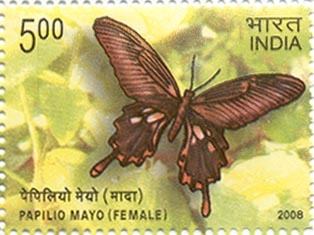Butterfly Conservation warns that Britain’s biodiversity is under threat following analysis of data from the National Moth Recording Scheme (NMRS), which has collated more than 16 million moth sightings dating back to 1769. The study by Butterfly Conservation, the Centre for Ecology and Hydrology and University of York, published in the Journal of Applied Ecology, is the first to examine long-term trends for all of Britain’s resident larger moth species; common and scarce, nocturnal and day-flying. Trends for 673 species were calculated, 60% of which showed a significant change over the 40-year period. Two thirds more species declined than increased. Moths are a key part of the food chain and act as pollinators for plants. The substantial declines revealed by this study provide further evidence of a wider utterfly Conservation warns that Britain’s biodiversity is under threat following analysis of data from the National Moth Recording Scheme (NMRS), which has collated more than 16 million moth sightings dating back to 1769.
The study by Butterfly Conservation, the Centre for Ecology and Hydrology and University of York, published in the Journal of Applied Ecology, is the first to examine long-term trends for all of Britain’s resident larger moth species; common and scarce, nocturnal and day-flying. Trends for 673 species were calculated, 60% of which showed a significant change over the 40-year period. Two thirds more species declined than increased.
Moths are a key part of the food chain and act as pollinators for plants. The substantial declines revealed by this study provide further evidence of a wider crisis in insect biodiversity with knock-on effects for many species such as birds and bats and ecosystem services such as pollination.
Declines among widespread moths were most severe in the southern half of Britain which has seen greater agricultural intensification and urban spread over the last four decades. In contrast, these same widespread species showed no overall decline in northern Britain, where land use changes have been less pronounced.
Source: Butterfly Conservation, 30 April 2014
http://butterfly-conservation.org/48-5672/moth-crash-indicates-insect-c…

- Log in to post comments

Systemic Insecticides: A Disaster in the Making
I am the author of a book entitled ‘the Systemic Insecticides, a Disaster in the Making,’ in which I argue that so many insects that are vital to our survival are being wiped out as a result of the extensive soil and water contamination by neonicotinoid pesticides that we are witnessing ‘an ecological collapse before our eyes.’ I point out that most bird and insect species are already struggling to survive, and have declined by around 65-70% in the past half century, in some countries. Further declines in insects and birds as a result of our continuing widespread use of neonicotinoid pesticides, will create an ecological disaster, I predict. Graham White, an environmental author who keeps bees in Scotland, shares my concern. “We are witnessing an ecological collapse in all the wildlife that used to live in fields, hedgerows, ponds and streams. All the common species we knew as children are being wiped out from the face of the countryside. Canadian wildlife biologist Neil Dawe says he wouldn't be surprised if the generation after him witnesses the extinction of humanity. All around him, even in a place as beautiful as the Little Qualicum River estuary, his office for 30 years as a biologist for the Canadian Wildlife Service, he sees the unravelling of "the web of life." "It's a veritable desert here." The loss to the food web is a loss to the web of life, he says, and people are a huge part of that web.